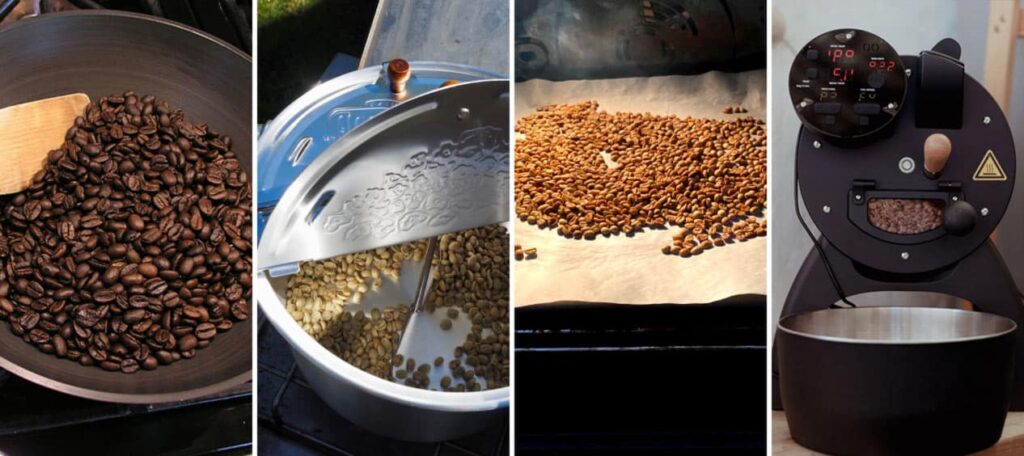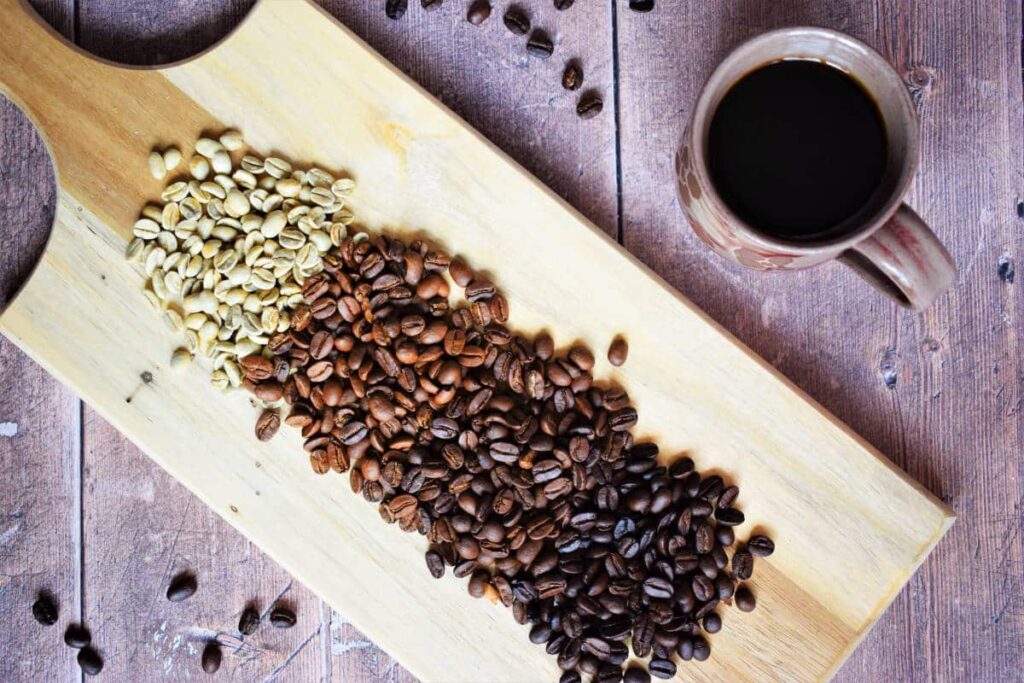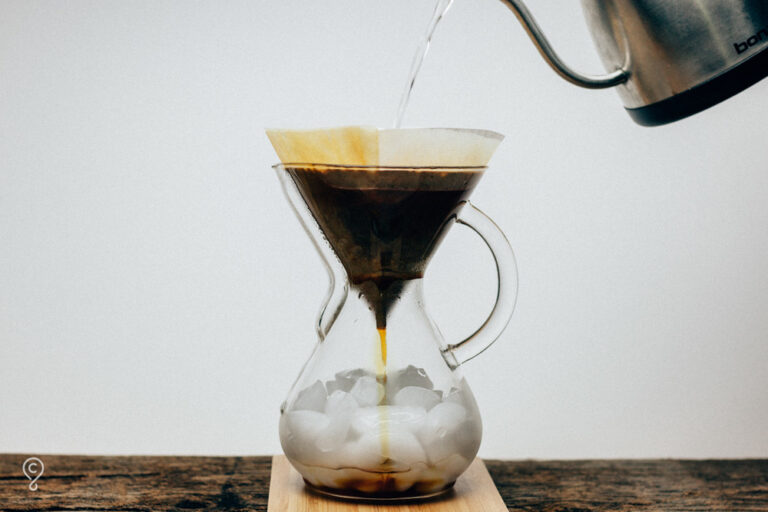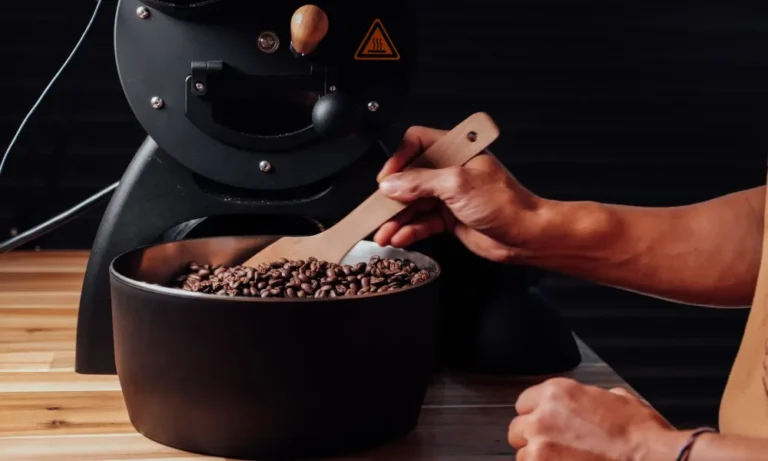Best Coffee Roasting Methods
Hey there, fellow caffeine aficionado! Ever wondered why your coffee tastes like it’s sending secret love letters from Colombia, Ethiopia, or even your local hipster café? It’s all in the roast, baby. This magical transformation turns green, unassuming beans into the aromatic, soul-stirring delights we can’t start our day without.
From light and lively to dark and mysterious, coffee roasting is an art and science that shapes every sip. Stick around, and let’s dive deep into the world of coffee roasting methods. By the end of this, you’ll be itching to explore more about what goes into your cup or even try roasting some beans yourself. Let’s get this java journey started!
What Happens When You Roast Coffee?
So, you’re curious about the magic that turns those green beans into your morning lifesaver? Roasting coffee is like turning Bruce Banner into the Hulk, but with beans and less smashing. When coffee beans hit the roaster, it’s showtime. They start off green with a grassy smell, pretty much the opposite of what you want in your coffee cup.

First off, they lose moisture and start to brown, thanks to the Maillard reaction (fancy science talk for “cooking”). This is where flavors start to get complex and interesting. Then, there’s this cool moment called “first crack”—it’s like popcorn popping, signaling the beans are expanding and transforming. They develop everything from fruity to nutty flavors here.

If the roaster pushes further, the beans hit a “second crack,” where they get an oil sheen and dive into deeper, bolder flavors. The whole process is a delicate dance of time and temperature, crafting the bean’s final taste profile. It’s alchemy, turning the ordinary into liquid gold.
Does Different Method of Coffee Roasting Affect the Taste?

Oh, absolutely! Imagine if music was made with only one instrument—kinda dull, right? The same goes for coffee roasting. The method and madness behind the roast play a huge part in the final encore in your cup. Each roasting method brings its own flair to the coffee concert.
Air roasting, for instance, is like jazz—smooth, with each bean getting an even spotlight, leading to a cleaner taste. Drum roasting? That’s your rock band—more traditional, a bit edgy, offering a deeper, fuller body due to the direct heat and longer roast times. And let’s not forget the indie methods, like pan roasting over an open flame for that raw, unrefined taste that some coffee lovers chase.
The choice of roasting method affects how the beans’ sugars caramelize and how the flavors develop. It’s like painting with different brushes; each stroke alters the canvas of taste. So, yes, the roasting method doesn’t just affect the taste; it defines it. Ready to explore the wide world of coffee flavors?
The Different Coffee Roasting Methods
Air Roasting
Imagine coffee beans floating in hot air, like they’re in a zero-gravity chamber, getting an even tan. That’s air roasting for you. You’ll need an air roaster, which uses hot air to circulate and roast the beans uniformly. This method highlights the bean’s natural characteristics, resulting in a cleaner, more acidic cup. Perfect for those who appreciate the subtle notes in their coffee. It’s like giving your beans a spa day, where they come out feeling rejuvenated and ready to impress your taste buds.

Drum Roasting
Enter the realm of the traditional with drum roasting. Here, beans get cozy in a rotating drum, basking in direct and indirect heat. You’ll need a drum roaster, patience, and a knack for timing. This method allows for a richer, more complex flavor profile, with the ability to tweak darkness levels. It’s akin to slow-cooking your favorite stew, where every ingredient melds together perfectly over time, offering a robust and hearty cup that’s as comforting as your grandma’s hug.

Pan Roasting
For the DIY enthusiasts or those craving a touch of rustic charm, pan roasting is your go-to. Grab a heavy skillet or pan, a wooden spoon, and your trusty stovetop. This method is hands-on, requiring constant stirring to avoid uneven roasting. It’s akin to roasting marshmallows over a campfire, where attention and care bring out a smokey sweetness. Pan roasting is ideal for adventurers looking to experiment and connect with the ancient ritual of roasting coffee. Each sip is a nod to the simplicity and artistry of coffee culture.

Short Tip for Each Method:
Air Roasting: Keep it light! Air roasting excels with lighter roasts. Monitor closely to enjoy the bean’s inherent flavors without overshadowing them.
Drum Roasting: Experiment with profiles. Drum roasting offers flexibility—play with heat and time to find your perfect roast level, from light to dark.
Pan Roasting: Stay vigilant. Constant stirring is key to avoid burning. This method is all about engagement and embracing the hands-on experience.

Wrapping Up
Diving into the world of coffee roasting is like unlocking a treasure chest of flavors and aromas. Each method, with its unique approach and required tools, offers a pathway to exploring the versatility and richness of coffee.
From the even, nuanced profiles achieved through air roasting, to the depth and complexity brought forth by drum roasting, down to the rustic, hands-on charm of pan roasting—there’s a whole universe to discover. Whether you’re a seasoned coffee aficionado or a curious newcomer, I encourage you to try your hand at these roasting methods.
Embrace the journey, experiment, and find your perfect cup. Coffee is a personal adventure, and roasting is your map. Start exploring!

Disclosure: Our blog contains affiliate links to products. We may receive a commission for purchases made through these links. However, this does not impact our reviews and comparisons. We try our best to keep things fair and balanced, in order to help you make the best choice for you.






